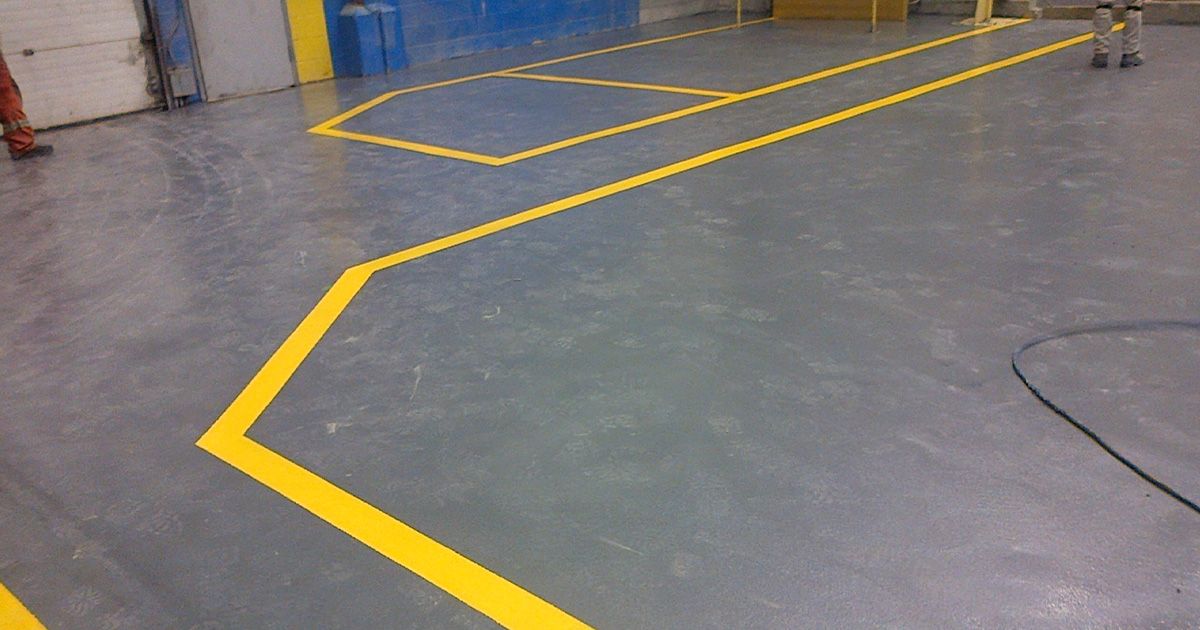
After 30 years, I think it's fair to say that there isn’ t much BNE Concrete Floors & Coatings hasn’t seen. From routine jobs to more complex projects, no one can match our expertise.
This post is the first in a three-part series where we’ll lo ok at three types of epoxy floor systems and explain when we recommend each to meet and exceed our clients’ needs:
- Epoxy Re surfacing
- Specialized Epoxy Coating Systems
- ESD
- Mechanical Room Waterproofing (MRW)
- Chemical Resistant Coatings
- Decorative & Thin Epoxy Systems
Today, we’ll go into the benefits of using epoxy to restore a high-traffic concrete floor and show you how we got the job done with minimal downtime.
Concrete Resurfacing: Using Epoxy to Restore a Badly Damaged and Worn Floor
Using epoxy to resurface a concrete floor is nothing new. But what most people don’t know is how durable a thick epoxy coating can be, and how useful it is for a business that cannot shut down for even a day.
BNE was contracted to provide a solution for a badly pitted concrete floor in a 12,000-square-foot maintenance building in Timmins, ON. Nothing unusual about the project, except for one major detail: “NO DOWN TIME!”
Our client is one of the largest gold mining companies in Canada. This maintenance building needs to be operational every day, no exceptions. Without the ability to repair large equipment, the gold stays in the ground, which means profits stay in the ground.
BNE worked out a plan to resurface the maintenance floor with a highly abrasion- resistant, trowel- applied epoxy in two phases:
- In phase one, we worked on 6,000 sq uare feet of the floor over 5-6 days, leaving half the floor operational for the client.
- In phase two, we traded places: the client’s operations moved to the half of the floor that was now resurfaced while we worked on resurfacing the second half.
After 12 days, the entire floor was resurfaced with no downtime to the client.
Preparation
Before getting into the resurfacing process, we have to set the stage for success. Preparation is arguably the most important step in the entire process, since it directly affects adhesion, durability, and overall quality.
For this project, we prepared the floor using a method called scarification, targeting a Concrete Surface Profile (CSP) of 5-6. Scarification is the process of removing the top layer of concrete (including existing coatings, contaminants, or inconsistencies) to create a rough surface texture, allowing the epoxy coating to adhere better.
Achieving a CSP of 5-6 meant we created a surface rough enough for the epoxy to anchor securely, but not so rough as to hinder the application and finish of the coating.

Our Step-By-Step Epoxy Resurfacing Process
The epoxy we used to resurface this floor w as Iron Guard, a steel-reinforced epoxy system with superior chemical resistance. Our process was as follows:
- We began with a thorough cleaning process to remove all contaminants from the concrete surface. This step ensures the best possible adhesion of the epoxy.
- Next, we applied a prime coat of epoxy and broadcast sand across it. This creates a strong bond between the epoxy and the existing concrete floor.
- For the application of Iron Guard, we used screed boxes to maintain a consistent thickness across the entire floor, with the epoxy applied at an average thickness of ¾ inch.
- After laying down Iron Guard, we used walk-behind trowels to finish the epoxy surface, much like how you would finish a concrete floor. This ensures a smooth and even surface.
- Finally, we performed back-rolling to bring the epoxy resin to the surface. We also broadcast more sand to create a slip-resistant texture that improved the safety and functionality of the floor.

Why Choose BNE for Your Epoxy Surfacing Needs
For our client, the project cost was not their biggest motivation for choosing BNE Concrete Floors & Coatings.
It was TIME.
When our client first began looking at options for their floor, they automatically assumed they would need to remove and replace all the concrete and rebar . This would have meant o ne week for removal , two days for grading, three days for pouring a new floor, and finally, time for curing. The best-case scenario would have been a turnaround of three weeks, during which time the maintenance building would be out of commission, which was unacceptable.
This is why a thick epoxy system was the clear choice. Using epoxy allowed for a faster turnaround with no downtime, improving the long-term durability of the floor and providing a safe, slip-resistant surface.
We completed this concrete resurfacing project in just 12 days without a single day of downtime. Using Iron Guard's steel-reinforced epoxy system, our approach not only met but exceeded our client's expectations. This project brings home the importance of choosing the right partner for your flooring needs - one that understands the value of time.
As we continue this series, we look forward to sharing more insights and successes, demonstrating why BNE remains at the forefront of concrete flooring and coating solutions.
At BNE, we are trusted experts in concrete finishing. We have the knowledge, equipment, and skills to properly install concrete for any type of project. We use industry-leading technology and expertise to provide the client with a concrete structure that will last. Our clients seek us out because we are a single source providing concrete finishing, polish and epoxy. This saves them time, money, and the hassle of communicating their needs to various contractors. Do not hesitate to reach out to us for your next construction project. We are just one phone call or email away!
